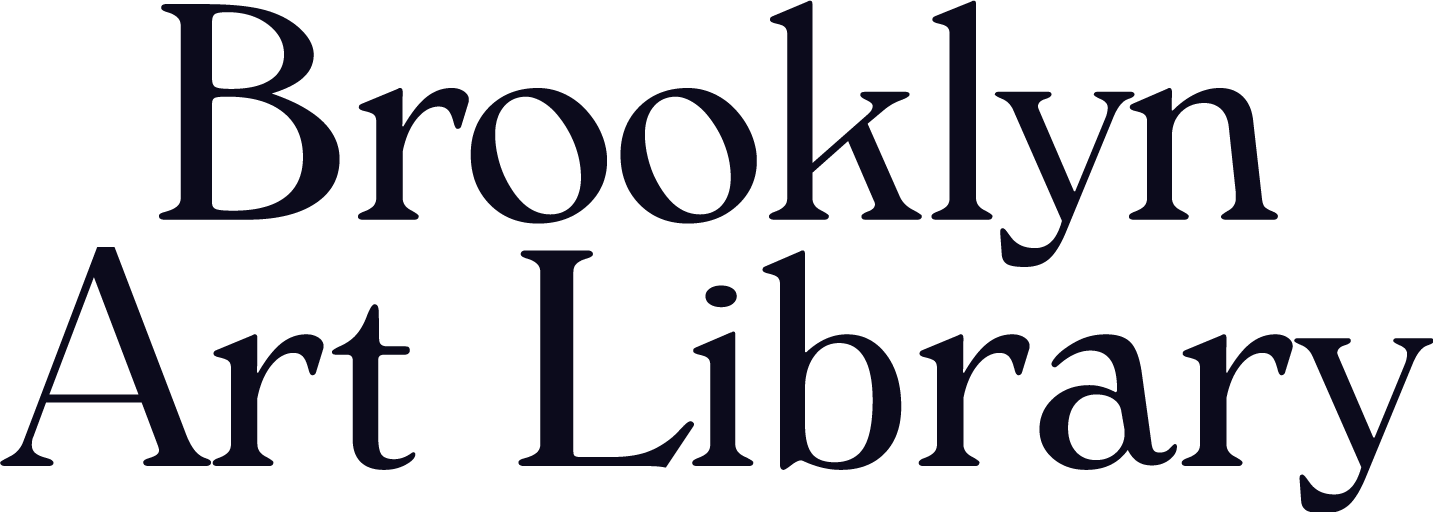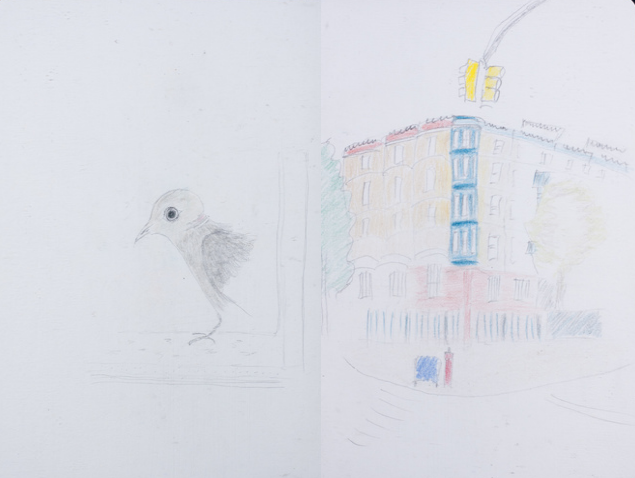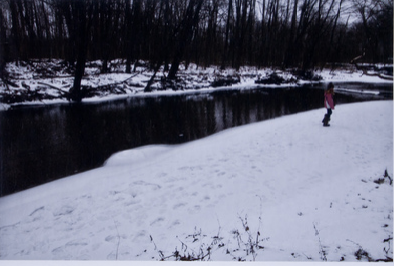Motion Capture
Sketchbooks are a way for artists to capture moments in time. Many of the ones on the Library shelves document travels, people and places artists pass by in their daily life, subjects quickly doodled in mid-action. Images are static, two-dimensional things. Yet, we can use them to portray the beauty of experiences that could be gone in an instant. Each of the following artists take their own approach to capturing movement, experimenting with materials and gestures from the abstract to the literal, with every jump, kick, brushstroke, and swipe of a pen in between.
Many of us now find ourselves stuck inside, and it’s definitely a challenge to not go stir-crazy, but Stephanie Hanel’s “Neighborhood Walks'' is a reminder to get outside when you can. Originally from Germany, Hanel’s drawings of her new Brooklyn surroundings are little vignettes of neighborhood characters caught in passing. With an airy hand, Hanel captures the alert eye of a pigeon, the detail of light striking a set of apartment buildings, and the delicate beauty of a broken chair abandoned on the sidewalk. One gets a sense that Hanel would stop, no matter where she was in her stroll, to quickly put to paper her observations. An author by trade, Hanel later wrote about her experience living in the city in her book, Goodbye New York, and about her experience seeing her book in-person at the Library.
When on your daily commute, it’s easy to put in your headphones, tune out, and keep your eyes either on the road ahead or on whatever material you might be reading or scrolling through. After moving to the States from Ukraine, Olga Rogachevskaya became fascinated by the strangers she would pass each day on the subway and how, despite their differences in culture and dress, would all be united in their journey across the city. The sketchy nature of each illustration gives you a sense of movement, passing through stations and crowded cars. But there are also moments of stillness: a person sleeping in their seat or a mother and child embracing. Her experiences would later be chronicled through linocut prints in her 2009 series, Subway Journey: A Home Away From Home which were exhibited in the Brooklyn Central Library.
Dance, as a form of creative expression, is inherently ephemeral. While there might be photographs or drawings that suspend pieces of choreography in time, capturing the emotionality and the kinetic energy of a dancer’s transition from one movement to another proves to be a challenge. Casandra Huff Terjani decided to take on this subject in her sketchbook, “A Moment of Movement...” By using paint, her fingers, and cardstock, Terjani recreates the blurred dynamism of each dancer’s moving body through a black-and-white contrast which mimics the illusion of harsh stage lights outlining their anatomy. Even collaged scraps from performance programs have their own sense of action, swirling into patterns that carry the viewer’s eye from one page to the next.
Lily Martine Baxter’s “Untitled” sketchbook looks at movement through medium. As splatters of paint run vertically down the pages, there’s a sense that the marks are defying gravity across the whole book, colors smearing into each other. The beauty of an abstract book like this is that you can see the action of the paint suspended in time without having to see the artist do the drips and splatters. Perhaps you are reminded of running water, the rhythm of music, or the movement of plants. As the great Abstract-Expressionist, splatter artist Jackson Pollock notes, “the painting has a life of its own.” Since completing her sketchbook, Baxter has gone on to create pieces that illustrate the labor behind their making. From deconstructed garments to a series of photographs of her own hands increasingly stained with ink, she portrays an artist’s work as something that is always ongoing.
Photography is the most common way we capture motion, from images of players at sporting events to candid photos of friends and family at an event. For his sketchbook, “A Path Through The Trees,” photographer Michael White decided to forgo the tradition of drawing and create a book inspired by the animated nature of flipbooks. His subject jumps across a field of fresh snow until, by the end of the book, the pristine snowscape becomes punctured with footprints. Wintertime is oftentimes associated with silence and tranquility, but a rapid click through each page is sure to infect you with feelings of nostalgia for playtime.





